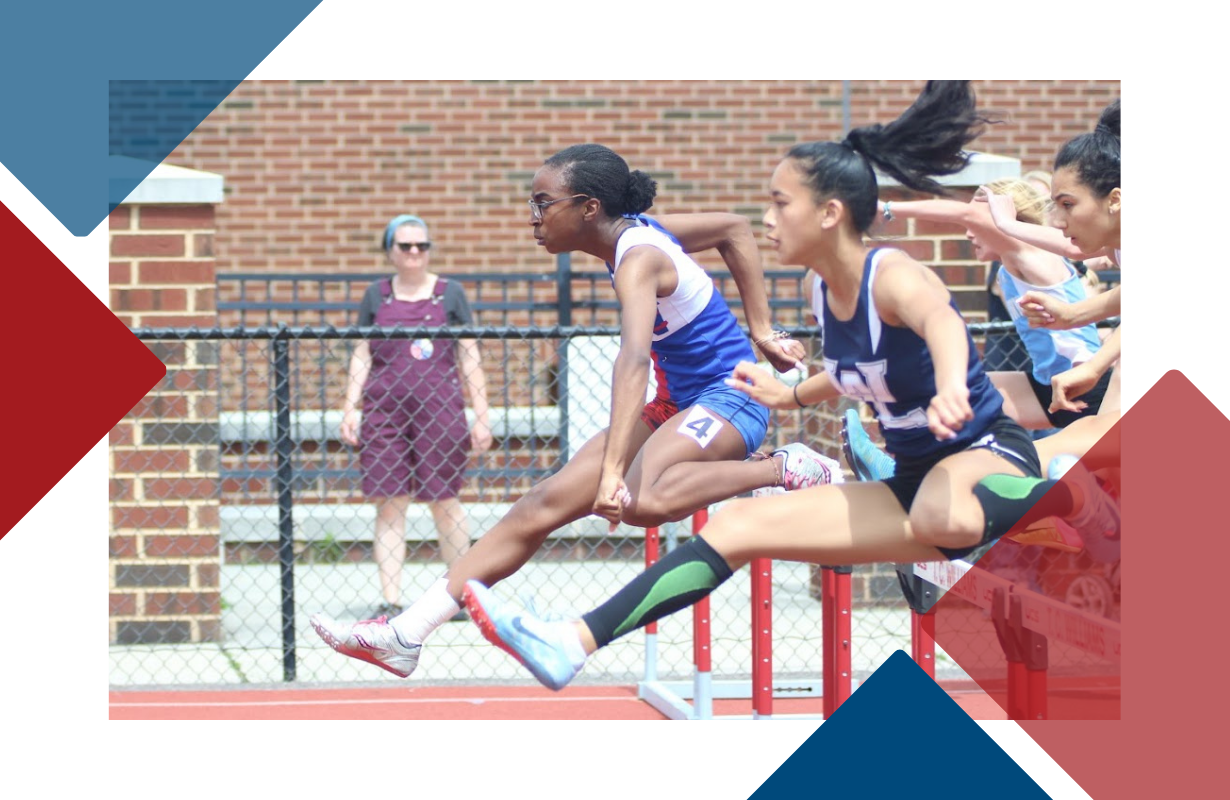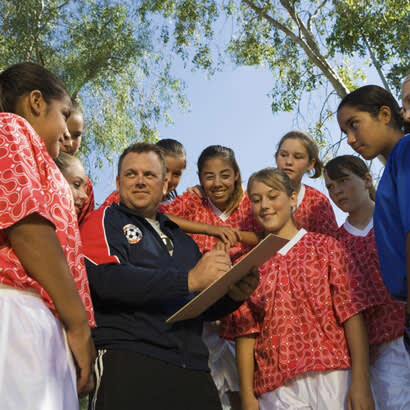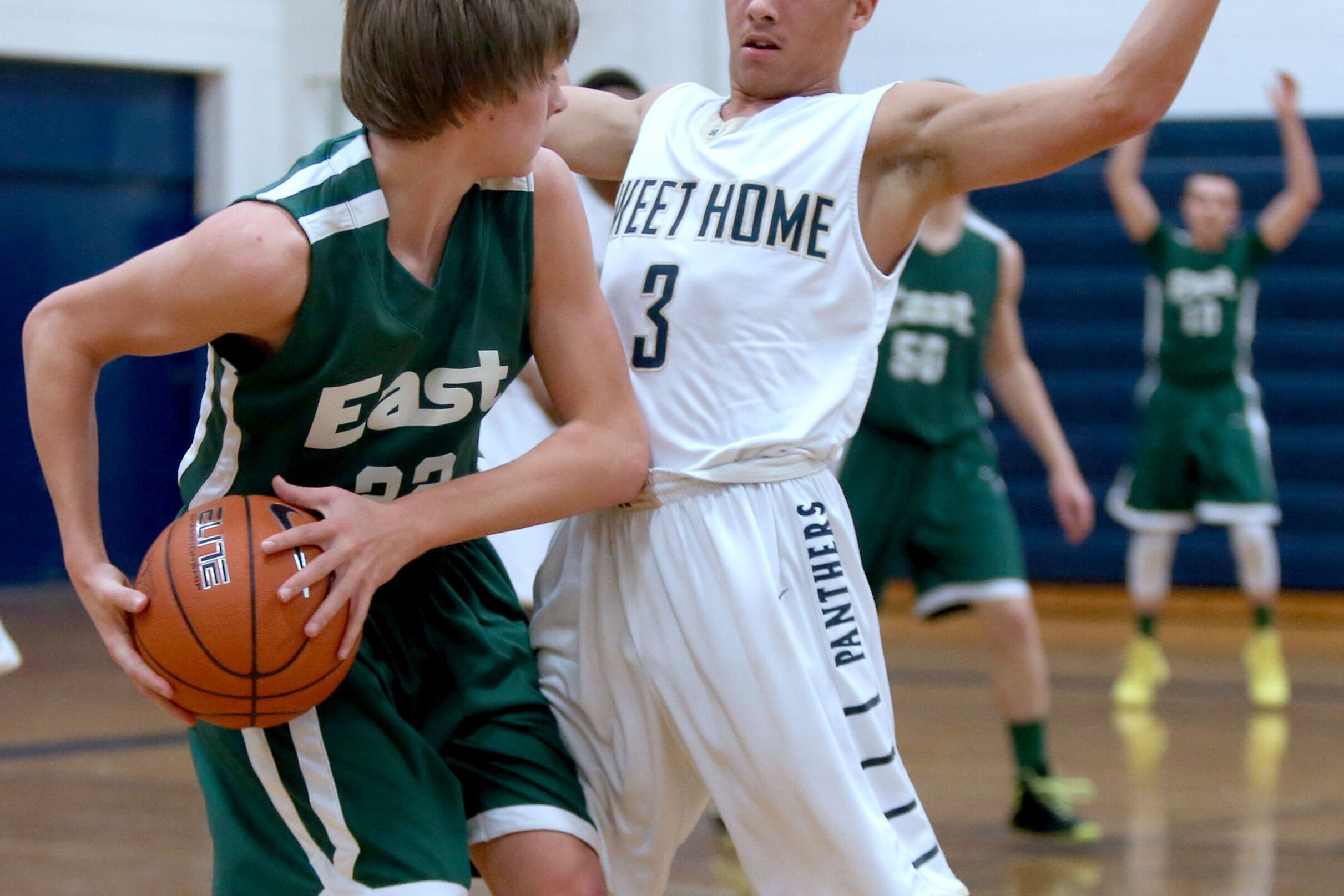Keyshawn Hunter, a senior football player at H.D. Woodson High School in Washington D.C., feels hopeless during the coronavirus pandemic.
A couple relatives died from COVID-19, so Hunter avoids seeing elderly family members and hopes he doesn’t get sick too. He won’t join friends at Black Lives Matter protests in Washington D.C., because he doesn’t feel comfortable with that yet. Lately, he can’t even walk around outside at certain times because of city curfews.
This should have been an exciting time for Hunter, who plans to play college football in the fall at Old Dominion University. It’s unclear when he will report to school – maybe sometime in July – and he hasn’t been in a gym lifting weights for a while due to COVID-19 restrictions.
“Now what do I do?” Hunter said. “That was just a waste of time. I did all this work for nothing and now have to start all over from ground zero. It’s just feeling lost.”
Once a week, Hunter logs on for a virtual Men’s Group meeting with Donald Curtis, a former high school assistant basketball coach who since 2013 has gathered at-risk youth for a group chat through SOUL, his community outreach program. Most of the youth are Black, live in public housing and play sports. They talk about anything. Sessions begin with youth asked to use a rap verse to describe how they feel. Curtis found that’s easier for kids than explicitly saying they feel sad or depressed.
Before the pandemic, Curtis would have as many as 40 athletes attend his weekly session in person. Now, Hunter is the only one who appears. Some of the others, Curtis said, are starting to fall into the wrong crowds again or don’t trust this new way to engage, so he has to rebuild that trust all over again.
These discussions with Curtis help because “you’re just letting it out and letting it be heard,” Hunter said. “You’re not holding it in no more. You can just be that kid and be weak for a second. I don’t want to say weak – human. You don’t have to be strong all the time.”
COVID-19 could fundamentally change the purpose of youth sports so adults in charge better care for athletes’ mental health and develop their social and emotional skills, not simply their athletic talent. Experts say this transformation must happen in order to catch some youth who are slipping through the cracks, and if they return to sports, will reenter with greater problems.
The shutdown of American schools due to the pandemic severed students not only from classrooms, friends and extracurricular activities like sports, but also from help. An estimated 55 million children and teenagers have been cut off from school staff members who helped them build self-esteem, cope with trauma, and in some cases, provide basic nutritional needs.
A third of Americans are showing signs of clinical anxiety or depression, according to Census Bureau data, the most alarming sign yet of the psychological toll exacted by the pandemic. There are exceedingly higher rates in some parts of the country – 48% of adults in Mississippi have symptoms of anxiety or depressive disorders, compared to 26% in Iowa. The figures don’t take into account anyone under the age of 18, but these challenges are impacting youth too.
In Stockton, California, 15-year-old high school athlete Jo Vianni Smith died by suicide in her bedroom on April 4. Smith was a talented athlete who played on her high school’s varsity softball team and competed in the junior Olympic track and field championships last year. Her mother, Danielle Hunt, told KCRA3 News that her daughter struggled amid the outbreak and having to stay home. “The world was taken away from her when she couldn’t do sports – that was her world,” Hunt said.
In Asheville, North Carolina, local students calling themselves “Uplifting Youth Voices” surveyed each other about the transition to virtual learning. Just over 16% of the middle and high school students reported “definitely” needing mental health counseling since schools shut down, according to the Asheville Citizen Times.
According to the NCAA, the rates of mental health concerns experienced by college athletes within the last month are 150% to 250% higher than historically reported. The NCAA’s recent survey of more than 37,000 athletes found that emotional barriers include a fear of exposure to COVID-19 (43%), lack of motivation (40%), feelings of stress or anxiety (21%), and sadness or depression (13%). One in 12 athletes reported feeling so depressed that it has been difficult to function “constantly” or “most every day.”
In recent years, discussing mental health has become much more common in professional and college sports. Some pro athletes and Olympians are now regularly speaking publicly about their battles with depression and anxiety. Meanwhile, some college athletic departments have the resources available to hire staff devoted strictly to the mental health of their athletes.
But these intentional daily discussions rarely trickle down to youth sports.
“There’s not really a spokesperson who has a lot of clout leading the charge,” said Rebekah Roulier, chief operating officer of Doc Wayne Youth Services, a sport-based group therapy program. “It would be terrific if an athlete would say, ‘I’m at this level now in sports, but I needed these services when I was 7.’”
‘We’re only seeing the tip of the iceberg’
As kids return to practices and games, experts say that intentionally addressing mental health and life skills will be critical for youth sports providers. Many youth, especially those in disadvantaged communities, are really struggling. Parents are stressed with poverty or unemployment. Reports of child abuse are down, but that doesn’t mean it’s not happening. Kids have been disconnected from support.
At Doc Wayne Youth Services in Boston, Roulier said many kids they are seeing virtually have regressed after making great strides over several years. That can cause frustrated parents to lash out at kids, creating a negative feedback loop.
Roulier speaks to many coaches lately who tell her they feel ill-equipped to handle difficult situations with players – and they’re even more worried as reentry to sports happens. Some coaches have Zoom calls with kids and witness what could be characterized as mild domestic violence. Roulier said most coaches and sport-based youth development programs have no idea or protocol for how to handle such a situation.
“We’re only seeing the tip of the iceberg. I’m pretty concerned,” Roulier said. “Kids with parents who are attending to them and can manage their own stress, those kids will bounce back because kids are resilient. For the parents who are tuned out or stressed out, it’s going to take a lot more to get those kids back. It’s an opportunity for youth sports as a whole to ask, ‘Did we have it right in the beginning? How can we put the whole person at the center, so perhaps it’s a better version of youth sports than before?’”
Even before the pandemic, the U.S. struggled to adequately diagnose, treat and support children with mental health conditions for years. Nearly 1 in 7 children have a mental health condition, and half go untreated, according to a study published last year in the Journal JAMA Pediatrics. The number of children and teens who visited emergency rooms for suicidal thoughts and suicide attempts doubled between 2007 and 2015, according to an analysis of data published by the Centers for Disease Control and Prevention last year.
Roulier stresses that there will not be enough health care professionals to handle so many psychological needs for kids. Many Medicaid providers, on which 40% of children in this country depend, are at risk of shutting down.
“We need to have a second wave of public health communication that says, ‘We need you coaches. You are our first line of defense for kids,’” Roulier said. “Then you need to give these coaches very basic education.”
Roulier suggests focusing trainings on how to talk to kids, which she believes is even more important than identifying mental health symptoms. Coaches can learn how to practice reflective listening, how to hold space for kids to talk, and then how to process the information and determine what to do if they hear certain comments.
This won’t be easy, acknowledged Roulier, who said too many youth coaches still have a win-at-all-costs mindset.
“It’s a really tough battle to fight in the youth sports world, especially with those coaches who think they have the next Michael Jordan or Mia Hamm,” he said. “We can’t change these folks entirely, so let’s make the case that if you want to build up their confidence and self-esteem, they’re more likely to succeed on the field. If you destroy their self-esteem and don’t check in on them or yell and scream, you may lose that game.”
Building trust with athletes
Curtis, the director of SOUL, said coaches too often punt the responsibility of handling their players’ social and emotional problems off to school administrators who don’t know the youth. “Coaches aren’t psychiatrists, but they play the role of them all the time – some good, some bad,” he said. “There needs to be some level of training that talks through social and emotional needs for coaches to think about.”
The Aspen Institute’s Project Play has Calls for Coaches resources to help youth sports coaches develop personal growth in their players, both in person and now virtually during the pandemic. The resources include a simple checklist for coaches to use at practices and games.
Positive Coaching Alliance offers online courses to help coaches be equipped with skills to deal with their social and emotional needs. Up2Us Sports has trainings for coaches to help players improve their mental health, heal from trauma, and learn conflict resolution skills. Doc Wayne Youth Services, which uses sports in school settings for trauma-informed group therapy, envisions in the near future collaborating with youth sports organizations to be a resource.
“There are training tools coaches can be using to engage kids now, but a lot of coaches think that will make kids soft,” Curtis said. “A lot of times coaches want players to have a certain edge to them. They don’t question how the edge came to exist, but they want that edge. OK, so what happens when that kid with that edge hits a roadblock and is trying to figure out the next step and all you can give the young kid is, ‘Push harder, you’re not working hard enough.’”
To Hunter, the high school football player currently in limbo, “if I can’t come and talk to my coach, I can’t play that for coach because there ain’t no trust.”
Hunter finds that talking lately helps him work through his worries about his health and feelings of hopelessness. “You never know if (COVID-19) will be better or not,” he said. “They say the wave might come back in the winter. Will we have to go through all of this again?”
Do you have a topic that you would like Project Play to explore in future COVID-19 youth sports coverage? Email Jon Solomon at jon.solomon@aspeninstitute.org.





















